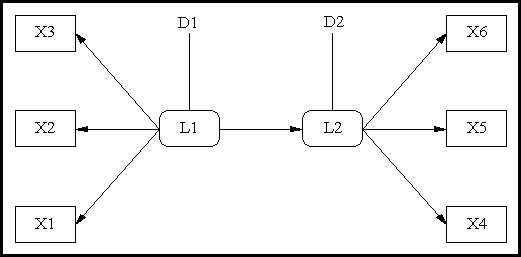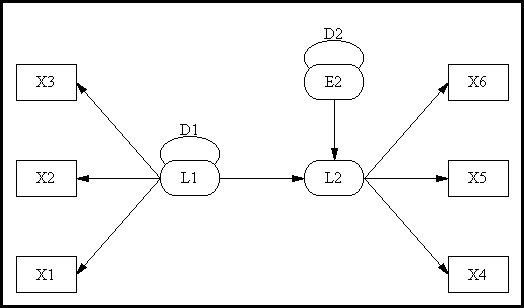Resolving Ambiguities in Path Diagrams
The figure below shows a portion (this is not a complete diagram and it does not conform to SEPATH diagramming rules) of a path diagram which is quite typical of what is found in the literature. Some of the diagram is clear and routine, but what do we make of the symbols D1 and D2? Variable L1 is a latent exogenous variable. It has arrows pointing away from it and no arrows pointing to it. Since, by rule 9 for SEPATH diagrams, all exogenous variables must have their variances and covariances explained, the most reasonable assumption is that D1 stands for the variance of latent variable L1. Hence, we modify the diagram to make D1 a parameter attached to a wire from L1 to itself.

The revised path diagram, accurately reflecting the author's model, is shown in the next figure.
In some cases you will have to be creative, tenacious, and lucky to figure out what the author intended. Even the most accomplished and generally careful authors will leave out paths, forget to mention that some values were fixed rather than free parameters, or simply misrepresent the model actually tested. Sometimes the only way to figure out what the author actually did is to try several models with SEPATH, until you find coefficients which agree with the published values. Sometimes even this approach will not work, because on occasion correlation or covariance matrices are printed incorrectly.

Some path diagrams do not represent the error variance attached to endogenous latent variables at all - they leave this to the reader to figure out for him/her self. Whenever an endogenous latent variable has no error term, you should suspect that an error latent variable has been left out, especially if your degrees of freedom don't agree with those of the published paper.
